I’ve written this many times relating to photography, keep it simple! When composing images that is one thing I am trying to do, especially when I am in an area or looking at a scene with a lot of elements to it. I try to distill the scene, to keep it simple, in order to have a stronger “voice” in the image. When there is a lot going on in an image, lots of elements and different colors and textures, it can be challenging to craft the composition so the viewer knows exactly where to look and for you to be clear about what you want the viewer to take away from the image. That’s where “keep it simple” comes in….by distilling a scene to a few elements, you can better direct the viewers focus on those elements that you want them to see and your intent with the image will be clearer.
I was recently up on Mt Rainier with my good friend Jack Graham scouting out various locations and overall just enjoying a nice day photographing on the mountain. On the way home from the mountain, we passed by a lake that had submerged tree stumps in it. I was instantly intrigued by this as I’ve had some great success with submerged trees and I enjoy the challenge of creating compelling images from this unique subject matter. We stopped the truck and prepared our gear. Even though I had only gotten a brief glimpse of the stumps, I knew what kinds of shots I wanted to take. I knew I wanted to keep it simple. So, in choosing a lens, I affixed my Fujinon 100-400mm to my Fujifilm X-T3 because I wanted to isolate and simplify my shots.
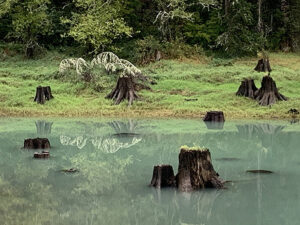
Here is a iPhone shot of the scene that I wanted to photograph. I could see several different compositions all within this small area of stumps and water. Looking at it as a whole, it is messy and I’m not sure where to look. I knew I had to carve out slices of this scene to create compositions that were more to my liking.
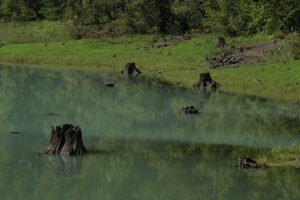
As I surveyed the scene, I knew I had to contend with the color of the water, the various stumps and their reflections, the reflections from the trees on the shore, the grass, etc and all of those would have to be factored in for me to keep it simple. Looking the other direction I was also met with a view of a lot of different elements that I could use to craft simple compositions
My vision for how to shoot this was really focused on the stumps in the water and the color of the water, so that’s why I grabbed the long lens for me to zoom in close to the stumps and isolate and simply the comp.
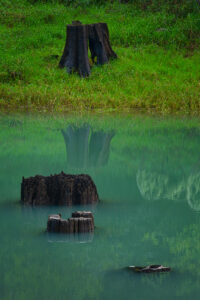
Starting at a medium range of zoom, I walked the shoreline until I saw several of the stumps line up in a pleasing way. Although I wanted to keep as much of the shoreline out of the shot as possible, I included some of it in this shot because of how the stump lined up with the two in the water.
Notice how I was able to keep space and separation between the stumps as well as their reflections. Giving each element room to breathe typically benefits a composition by having less “tension” in the image.
Earlier I talked about having to contend with reflections in images and in this shot there was nothing I could do about the white branches being reflected in the water. They are a compositional element I do not want in the image, but there was nothing I could do about them when composing the scene.
Remember, my goal was to keep it simple which meant removing as many elements as possible that didn’t add to my vision for the shot, which was the stumps and water.
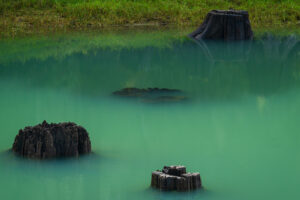
And then as I started to zoom in more on the stumps, I removed even more of the grass and shoreline.
In this shot, the 3 nearest stumps make a nice triangle with the 4th stump fitting in nicely with them. When the sun peeked from behind some clouds it lit up the glacial silt and algae in the water turning it a bright vibrant green.
Once again I worked to remove elements that didn’t add value to the vision for the image. I was able to minimize reflections from the shore and used a long zoom lens to isolate my subjects.

And finally, the epitome of keep it simple. A lone stump and the green water with a bit of interest in the foreground. I distilled that original chaotic scene down to this one stump.
My lens was zoomed in to the max for this shot and I wanted to contrast the texture of the stump against the smooth water; the color of the stump against the color of the water. As a bonus the water was clear enough right at the foreground to show a bit of the stump in the lakebed and the underwater growth.
There is still some reflection from other trees showing up in this image and if I spent an hour of so I could clone it out, but for this example, I left it as is.
The art of photography and composition is deciding what to put in your composition, AND, it’s deciding on what to NOT include. That’s one of the challenges with shooting with a Wide Angle lens, it includes so much in the frame that you really have to work hard to have all of the elements work together in a cohesive manner. That’s why I shoot more and more landscapes with a WA or medium telephoto lens….I can be more selective about what is in my frame. I can isolate and I can keep it simple.

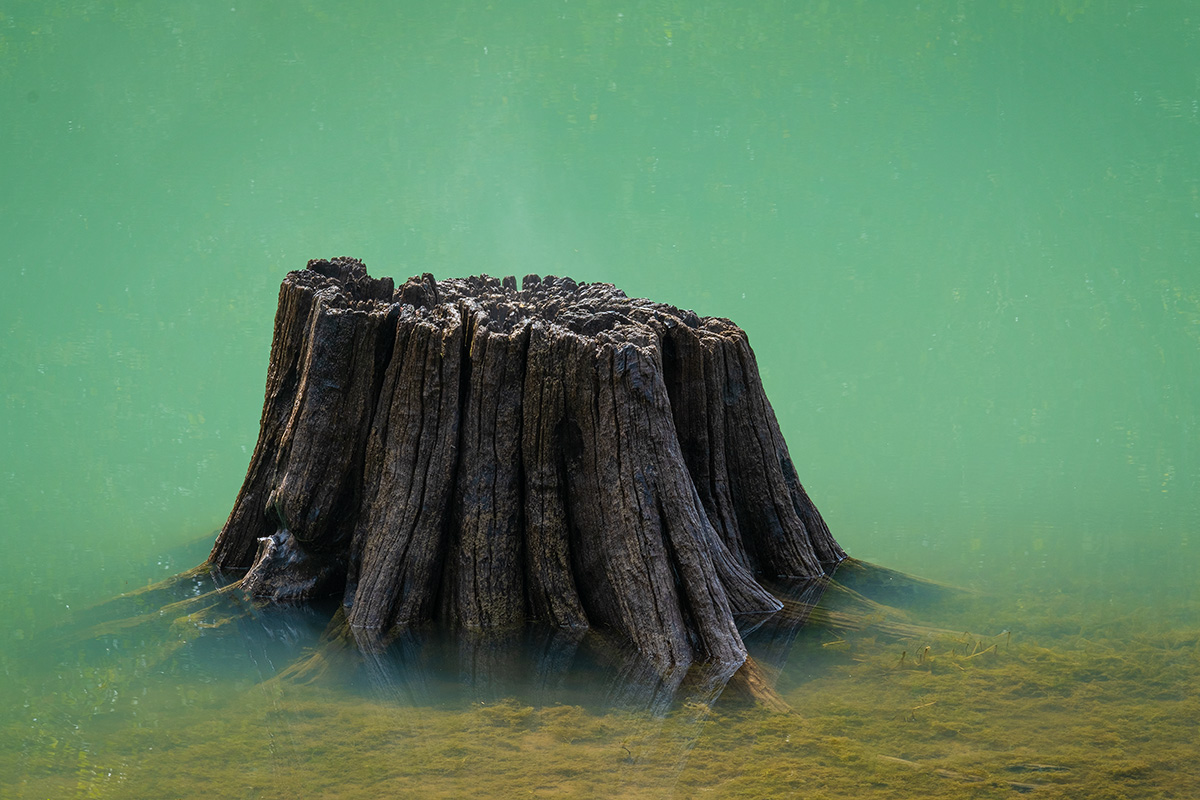
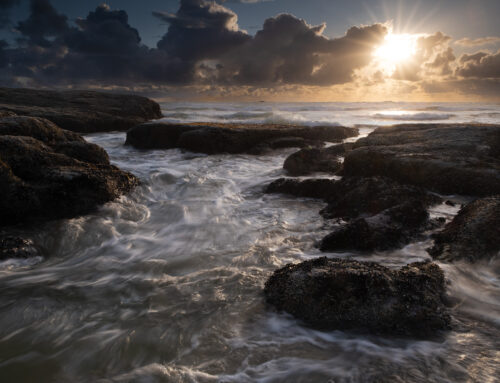
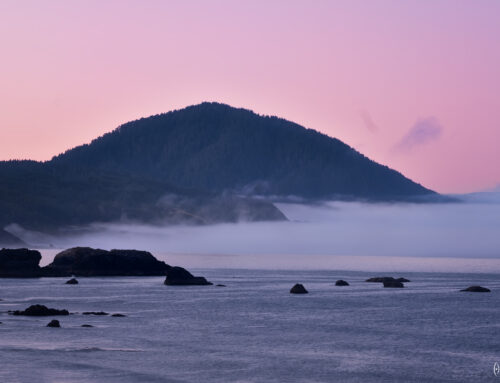
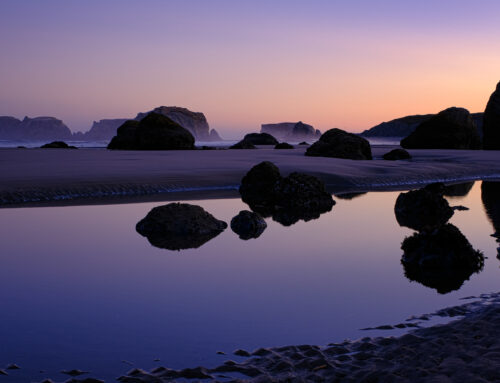
Leave A Comment